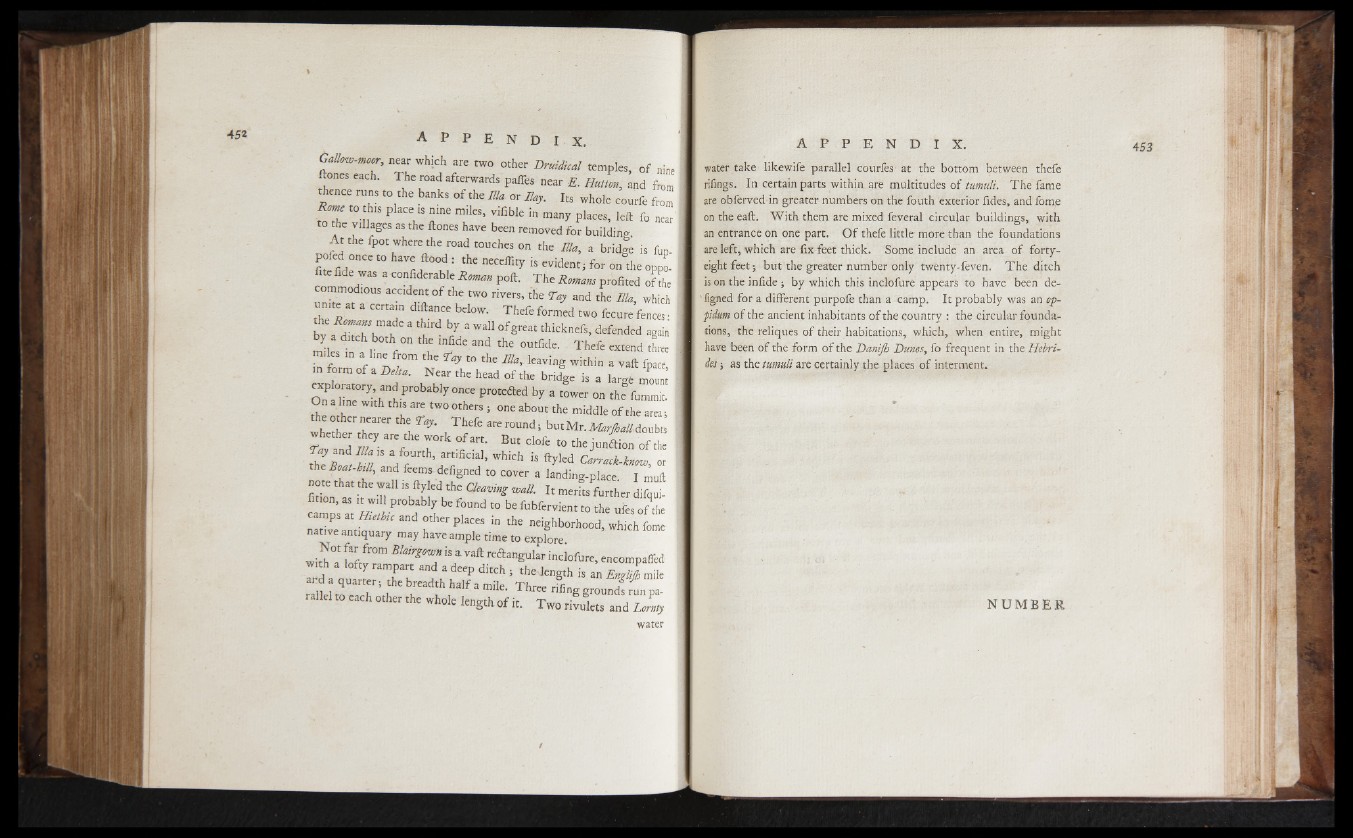
Gallow-moor, near which are two other Druidical temples, of nine
ftones each. The road afterwards paffes near E. Hutton, and from
thence runs to the banks of the Ilia or Bay. Its whole courfe from
- f T t0, i ,S plaCe'S "me mLiles> viflble ;n many places, left 1 near
to the villages as the ftones have been removed for building
At the fpot where the road touches on the Ida, a bridge is ftp.
pofed once to haveftood : the necelfity is evident; for on the oppo-
,W3S a confiderable Roman poft. The Romans profited of the
commodious accident of the two rivers, the Tay and the HR which
unite at a certain d.ftance below. Thefe formed two fecure fences ■
the R „ made a third by a wa]I Qfgrea£ th.cknefS) *
by a ditch both on the infide and the outfide. Thefe extend three
i es in a me rom the Tay to the Ilia,, leaving within a vaft fpace I
m form of a Delta. Near the head of the bridge is a larg* morn
exploratory and probably once proteded by a tower on the furnmit!
On a line with this are two others; one about the middle of the area;
the oher nearer the-Tay, Thefe areround; but Mr. doubts
whether they are the work of art. But clofe to the juniion of the
tZ Z a t l T d f ,Jrt 7 r fiCia1, WhiCh 18 ftyl£the Boat-hill, and feems. defigned to cover a landdin gC-apnlraaccek -kriIo wm, uoftr
note that the wall is ftyled the Cleaving wall. It merits further difquicamps
at 'm l . *° W fUbferVient t0 the ufo of the
native arnimi ^ other places in the neighborhood, which fome
native antiquary may have ample time to explore.
with°a infr!’°m ^ * 7 7 ™ * ^lofure, encompaffed
with a lofty rampart and a deep ditch ; the length is an Enrlifhmile
raanldle al tqr,u arter; ut.h e -bir eadti h ,h alf a mile Thnrreeee rrmi finn „g grounJds 7run parallel
to each other the whole leno-th nf ,
0le lengtn oi it. Two rivulets and Lornty
water |
t
water take likewife parallel courfes- at the bottom between thefe
rifings. In certain parts within are multitudes of tumuli. The fame
are obferved in greater numbers on the fouth exterior fides, and fome
on the eaft. With them are mixed feveral circular buildings, with
an entrance on one part. Of thefe little- more than the foundations
are left, which are fix feet thick. Some include an area of forty-
eight feet; but the greater number only twenty-feven. The ditch
is on the infide ; by which this inclofure appears to have been defigned
for a different purpofe than a camp. It probably was an op-
fidum of the ancient inhabitants of the country : the circular foundations,
the reliques of their habitations, which, when entire, might
have been of the form of the Danijh Dunes, fo frequent in the Hebrides
; as the tumuli are certainly the places of interment.
NUMBER